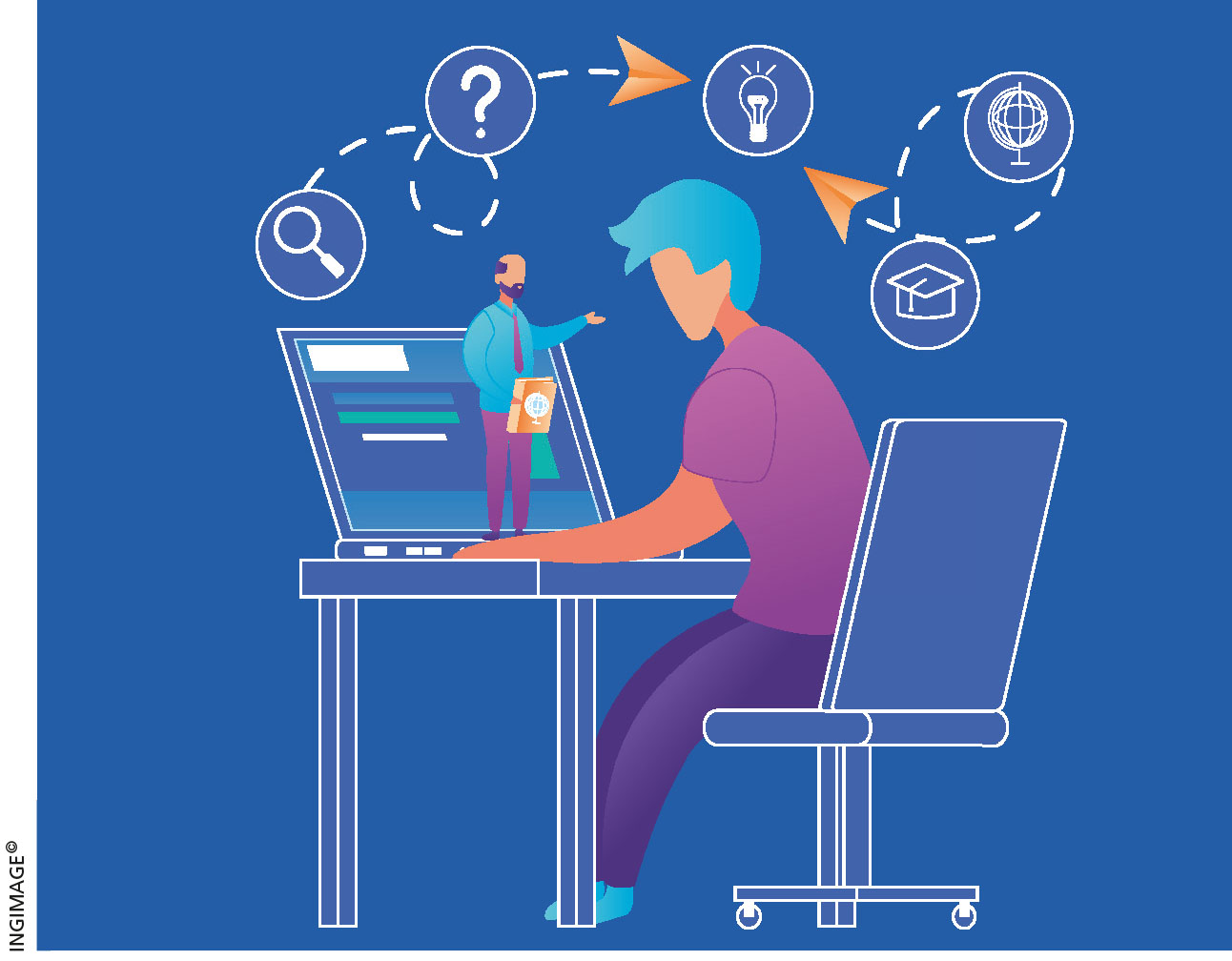EDUCATION ONLINE
TEACHING DURING A PANDEMIC
BY Saashya Rodrigo
Teachers across the globe have long battled the problematic imbalance between their high job demands and a severe lack of funding and resources. While much of the teaching experience entails finding ways to tackle this imbalance, neither years of experience nor the level of qualification could prepare educators for the previously incomprehensible task of teaching during a global pandemic.
 The sudden transition from in-person learning to remote learning has been challenging for teachers, students and parents alike.
The sudden transition from in-person learning to remote learning has been challenging for teachers, students and parents alike.
Whether schools follow an all virtual model, an all in-person model or a hybrid model (both online and in-person instruction), teachers have had to adapt to an entirely new way of teaching. As researcher Rebecca Stroud Stasel at Queen’s University in Canada aptly describes it, it’s like “learning to walk all over again.”
Teaching remotely using a virtual platform was an abrupt but necessary shift for almost every school across the world. In most cases, this meant that teachers had to quickly adapt to the inconveniences and shortcomings of a virtual setting while continuing instruction as usual.
However, ‘business as usual’ proved to be a utopian concept since remote learning was prolonged and soon became a way of teaching that was here to stay.
Just as teachers face challenges with remote teaching, students too face challenges with remote learning. Regardless of the grade, much of remote learning is self-driven. Along with the sudden change to the routine of schooling, schools needed to adjust the academic expectations they placed on students.
This meant that teacher expectations also needed to change. But for many teachers, this was not the case.
Education researchers from Auburn University in Alabama and Randolph-Macon College in Virginia surveyed 328 public school teachers regarding their experiences with transitioning to remote learning. Of the sample, 92 percent didn’t have any experience teaching online prior to the emergency transition. A vast majority indicated that they had yet to receive any meaningful training relating to online teaching.
Respondents also rated all aspects of their tasks – i.e. planning lessons, student assessments, communicating with parents and differentiating instruction – to be far more challenging than their pre-pandemic teaching experiences.
Overall, participants indicated that they lacked the time, instructional resources, technical support, knowledge and experience to sustain the same level of instructional quality and academic rigour that they were able to deliver pre-pandemic.
This was particularly evident among music, art and physical education teachers. Additionally, given that remote learning is largely self-driven, respondents indicated that student accountability was one of the biggest challenges they faced during their experiences with remote teaching.
The challenges of teaching during a pandemic are not exclusive to remote learning. Many schools have opted to continue with face-to-face instruction whilst taking precautionary measures such as mandatory mask wearing, daily temperature checks and physically distanced learning environments.
For many schools, maintaining physical distancing is problematic. As stated in a news story by Boston’s National Public Radio, placing desks six feet apart is an impossible expectation for smaller classrooms to meet, even if their capacity is reduced by 50 percent.
Simple precautionary measures such as wearing a mask have also proven to be problematic in some educational settings, particularly those that cater to students with special needs.
As stated by Dr. Manfred Spitzer of the University of Ulm in Germany, masks not only obstruct one’s ability to communicate, interpret and mimic expressions, they also interrupt the ability to perceive emotions, which is a major component of teacher interactions and feedback.
Impact from the challenges of remote teaching present a major cause for concern for the future of teaching and education at large. With teachers being underprepared and poorly supported during this sudden switch to remote teaching, their feelings about their jobs and ability to perform their duties effectively have rapidly diminished.
In her research, Stasel found that the effects of remote teaching have caused teachers to experience higher than usual levels of stress.
The aim to prioritise safety and quality educational experiences during the pandemic has also revealed the inequity present across student populations.
Not every school has been able to provide for students and support teachers in the same way. As evidenced by Mark Lieberman of Education Week, adapting to the pandemic has exposed the widening gap between students from more affluent households and those from marginalised and disadvantaged backgrounds.
Ultimately, the safety of students and school personnel is and should be a primary concern. Though sustaining optimal safety and precautionary measures while prioritising education is necessary, it has proven to be immensely challenging.




Leave a comment